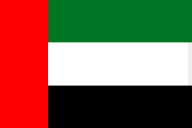There are three ways for the applicant to apply for a registered trademark in different countries:
1. Single country registration
2. Regional registration
3 .Madrid trademark international registration.
A single national registration refers to submitting an application for trademark registration to the trademark authorities of various countries in accordance with the laws of various countries.
Regional registration means applying to a regional trademark office for the registration of a trademark, and the effect extends to all Member States in the region; Several common regional trademark authorities are: EU Intellectual Property Office euipo, Benelux Office of Benelux common office, African Intellectual Property Organization OAPI, African Regional Industrial Property Organization ARIPO, etc.
Madrid international trademark registration refers to the trademark registration among the member states of the Madrid Union in accordance with the Madrid Agreement on the international registration of trademarks or the relevant protocol to the Madrid Agreement on the international registration of trademarks.
"Madrid union" means the special union for the international registration of trademarks composed of countries or intergovernmental organizations to which the Madrid Agreement and the Madrid Protocol apply.
As of 2021, the Madrid Union has 108 parties, covering 124 countries. China, the United States, Germany, France, the United Kingdom, Italy, Japan, South Korea, Russia, Australia, Switzerland and other major economies in the world are members of the Madrid Union.
Madrid trademark international registration has the advantages of low cost, simple procedures and short registration cycle.
Conditions for international registration of trademarks
International trademark registration is the main way to obtain trademark right. At the time of registration, the trademark authorities of various countries will examine the application submitted by the registration applicant in accordance with the conditions stipulated in their own trademark law, international conventions and agreements. These legal conditions are the necessary conditions for the approval of a trademark registration, which are called the conditions for international trademark registration. The conditions for international trademark registration are an important part of trademark examination.
The following situations are considered not to have significant characteristics in most countries:
(1) The trademark adopts the trade name or graphics commonly used in the industry. If "cow" is used as the trademark pattern of milk powder, because cow is a common commodity pattern in the industry, the trademark does not have significant features and cannot be registered.
(2) The trademark uses a geographical name. According to international practice, many countries and regions prohibit the use of geographical names as trademarks, because geographical names can not distinguish different commodity producers and operators.
(3) The trademark is only composed of words and graphics indicating the quality, main raw materials, function, purpose and other characteristics of the commodity. Such as "Cashmere" plush, "gold" pen, etc. The adoption of such a trademark will confuse the goods with other similar goods.
(4) The trademark consists of simple Arabic numerals. Arabic numerals as trademarks; It will make it difficult to identify, and it will cause misunderstanding when used in some goods. For example, the trademark used for shoes is easy to be confused with size. Most countries stipulate that digital trademarks are not registered. For example, the application for registration of "555" brand batteries produced in Guangzhou has not been approved in Pakistan, Kenya and other countries.
Different countries have different standards for the examination of the salient features of trademarks. The Japanese trademark law and the Chinese Trademark Law have roughly the same provisions on salient features, but require that the trademark must use one or more designated colors.
The provisions of the French trademark law are relatively loose. All marks that can be used to identify products, goods or services, such as surname, alias, place name, label, logo, branding, printing, stamp, illustration edge, picture, relief, letters, numbers and inscriptions, can be used as trademarks of industry, commerce or service industry.
The United Kingdom and the United States implement a two-part trademark registration system. The requirements for trademarks registered in part a (main register) are stricter than those registered in part B (sub register).
The British trademark law stipulates that any application for registration as a trademark in part A shall meet at least one of the following conditions:
(1) The company, brand name, name or individual name is expressed in a unique shape;
(2) The signature of the applicant or the predecessor of the enterprise;
(3) One or more original words;
(4) One or more words that are not directly related to the characteristics or quality of the goods, but shall not be geographical names or surnames;
(5) Other salient features.
Contact: E-SNAVS Foreign Enterprise Service Center
Tel: +8613928935105
Email: evans@snavs-china.com
Add:
Guangzhou:
Unit 2006-2007, Yian Plaza, No. 33, Jianshelu Road, Yuexiu District, GuangZhou 
Yiwu:
Unit 1011, YiWu International Business Center, Na. 399,YinHai Road, Yiwu, ZheJiang 
Shenzhen:
Room 2102, Huarong Building, 178 Mintian Road, Futian District, Shenzhen 
Hong Kong:
Flat'Rm B 5/F, Gaylord Commercial Building, 114-118 Lockhart Road, Wan Chai 
Dubai:
Suite 03, Unit 1801, 18th Floor, Burlington Tower,Al Abraj St., Business Bay, Dubai 